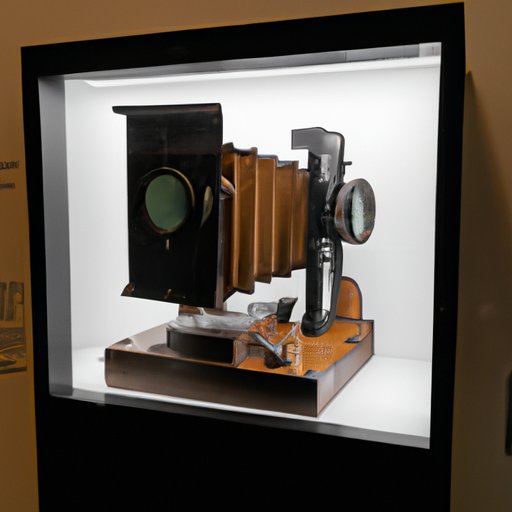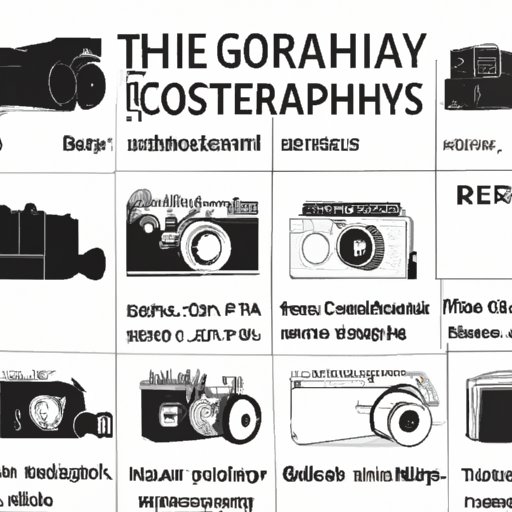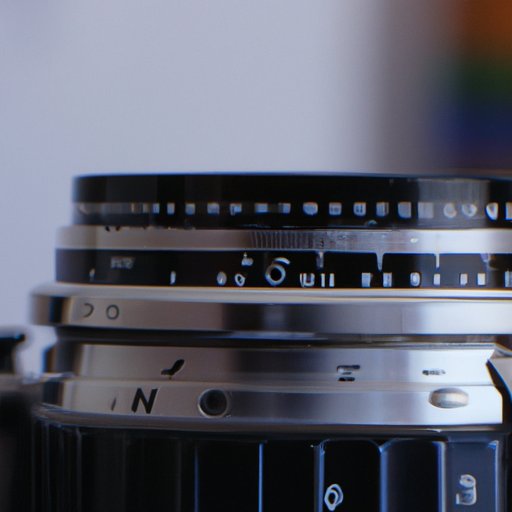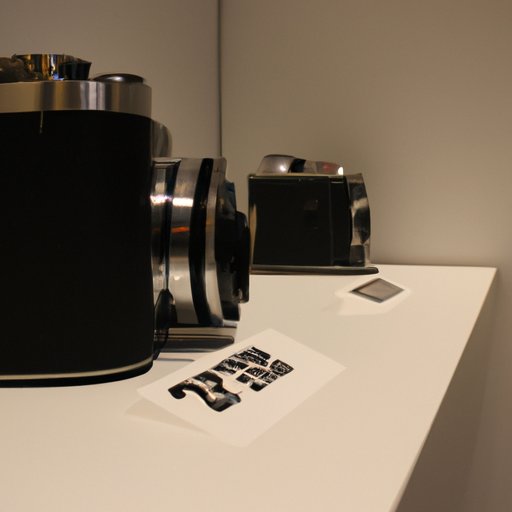Introduction
Cameras have come a long way since their invention in the early 19th century. But what is a camera? By definition, a camera is a device used to capture still or moving images, either as an optical recording on film or electronically. The problem to be solved was how to capture the world around us in a way that was never before possible – to freeze moments in time and preserve them forever.

A Historical Look at the Invention of the Camera
Tracing the history of cameras back to the 1800s, we find that the first camera-like devices were known as pinhole cameras. These cameras had no lens, but instead used a tiny hole that allowed light to pass through and project an inverted image onto a surface opposite the hole. This process is known as “camera obscura” and was first described by Chinese philosopher Mo Ti in the 5th century BC. It wasn’t until the 16th century that artist and scientist Leonardo da Vinci documented and refined the principles of the camera obscura.
The development of camera technology continued throughout the 19th century, with the introduction of the daguerreotype camera, which used silver-plated copper plates to capture images. This new technology revolutionized photography and made it accessible to the masses, as it was much easier to use than the cumbersome and expensive cameras of the day.
Exploring the Birth of the Camera: From Pinhole to Digital
The pioneers behind the camera are a mix of scientists, inventors, and entrepreneurs who helped shape photography into what it is today. Most notably, George Eastman revolutionized photography with the invention of the Kodak camera in 1888. This portable, easy-to-use camera was the first to use photographic film, allowing people to take multiple photographs without having to reload the camera each time.
So who invented the first camera? While there is no single individual credited with the invention of the camera, many point to French inventor Joseph Niépce as the earliest pioneer of photography. Niépce developed a primitive camera in 1826, using a pewter plate coated with bitumen of Judea and exposing it to light for eight hours. This was the first recorded example of a photograph.

A Timeline of Camera Technology: How It All Began
Since then, camera technology has advanced significantly. Early photography techniques, such as the daguerreotype, relied on manual processes for developing images, which were often slow and laborious. Developments in camera technology over the last two centuries have enabled faster and more efficient ways of capturing images, from roll film to digital cameras.
By the mid-20th century, color photography had become commonplace with the introduction of color film. With the advent of digital cameras in the 1990s, photography underwent another transformation. Digital cameras allowed photographers to easily edit and manipulate images, creating an entirely new creative medium.
How the Camera Changed the World: Its Impact on Visual Culture
The invention of the camera has changed the way we see and interact with the world around us. Increased accessibility to photography has enabled us to document our lives in ways never before possible. From documenting historic events to capturing everyday moments, the camera has become an indispensable tool for communication and expression.
The emergence of photography as an art form has also transformed visual culture. Photographers have pushed the boundaries of creativity, exploring new genres and finding unique ways to portray the world. Today, photography is one of the most popular forms of art, with countless photographers sharing their work online.

A Closer Look at the Camera: Its Development Over Time
In recent years, advances in technology have enabled the development of digital cameras with ever-increasing resolution and capabilities. From DSLR cameras to smartphone cameras, photographers now have access to a wide range of tools for capturing and editing images.
The latest cameras are equipped with features such as artificial intelligence (AI) and machine learning (ML), which allow users to automatically enhance their photos and videos. These technologies are making photography more accessible and making it easier to create stunning visuals.
Conclusion
To conclude, cameras have come a long way since their invention over two centuries ago. We’ve traced the history of cameras from pinhole cameras to digital cameras, exploring the pioneers behind the camera and the impact of camera technology on visual culture. From increased accessibility to photography to the emergence of photography as an art form, the invention of the camera has changed the world in innumerable ways.
As technology continues to progress, so too will the capabilities of cameras. With AI and ML becoming increasingly prevalent, we can expect to see even more exciting developments in camera technology in the future.
(Note: Is this article not meeting your expectations? Do you have knowledge or insights to share? Unlock new opportunities and expand your reach by joining our authors team. Click Registration to join us and share your expertise with our readers.)
